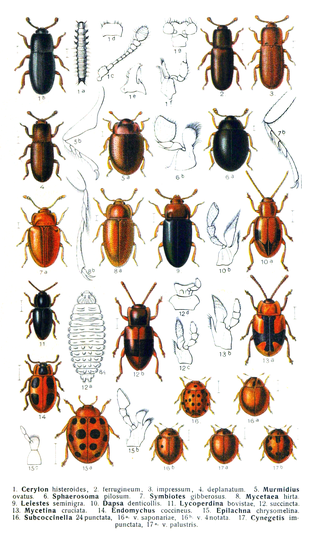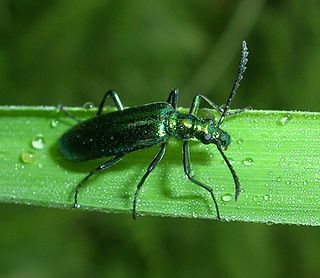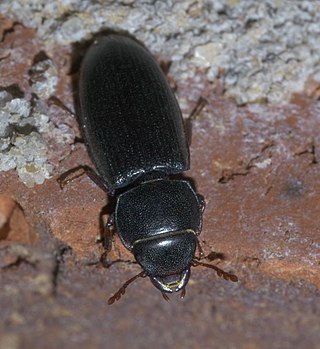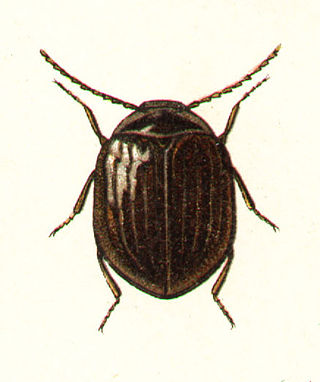
Cucujoidea is a superfamily of beetles. This group formerly included all of the families now included in the superfamily Coccinelloidea. They include some fungus beetles and a diversity of lineages of "bark beetles" unrelated to the "true" bark beetles (Scolytinae), which are weevils.

Lampyris is a genus of beetles in the Lampyridae. In most of western Eurasia, they are the predominant members of this family and includes the European common glow-worm, which is the type species. They produce a continuous glow; the larvae and larviform females are among those organisms commonly called "glowworms".
Pierre Nicolas Camille Jacquelin Du Val was a French entomologist who specialised in Coleoptera.

Melyridae are a family of beetles of the superfamily Cleroidea.

Prionoceridae is a small family of beetles, in the suborder Polyphaga. They form a group within the cleroid beetles and were formerly treated as a subfamily (Prionocerinae) within the family Melyridae. Very little is known of their life history but most species are pollen feeders as adults and occur in large numbers during spring or the host flowering season. Larvae are predatory or feed on decomposing wood.

Byturidae, also known as fruitworms, are small family of cleroid beetles with over 15 described species, primarily distributed in the Holarctic and Southeast Asia. The larvae of at least some genera feed on fruit, such as Byturus, a notable commercial pest of Rubus consuming both the fruit and seeds, while others like Xerasia are associated with catkins. The adults are known to feed on developing leaves, flowers and pollen.
Hilarotes is a genus of beetles in the family Buprestidae, containing the following species:
Alcidion umbraticum is a species of longhorn beetles of the subfamily Lamiinae, and the only species in the genus Alcidion. It was described by Jacquelin du Val in 1857.

Alcidion is a genus of beetles in the family Cerambycidae, containing the following species:
Anillus is a genus of ground beetles in the family Carabidae. There are about 19 described species in Anillus.

Sinechostictus is a genus of ground beetles in the family Carabidae. There are more than 30 described species in Sinechostictus.

Leptostylopsis argentatus is a species of longhorn beetles of the subfamily Lamiinae. It was described by Jacquelin du Val in 1857.

Enicopus is a genus of soft-winged flower beetles belonging to the family Melyridae, subfamily Dasytinae. Species in this genus are present in most of Europe and in the eastern Palearctic realm.
Chaerodrys is a genus of obese weevils.

Tenebroides is a genus of bark-gnawing beetles in the family Trogossitidae. There are at least 20 described species in Tenebroides.

Pycnomerus is a genus of ironclad beetles in the family Zopheridae. There are more than 20 described species in Pycnomerus.

Parchicola is a genus of flea beetles in the family Chrysomelidae. There are at least 4 described species, found in North America and the Neotropics.

Eubria palustris is a species of beetle belonging to the family Psephenidae.
Atrecus is a genus of beetles belonging to the family Staphylinidae. The genus was first described by Jacquelin du Val in 1856. The species of this genus are found in Eurasia and Northern America.
Gompelia is a genus of beetles belonging to the family Aderidae.












